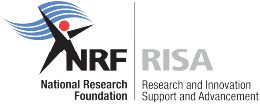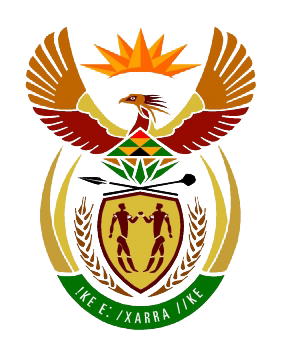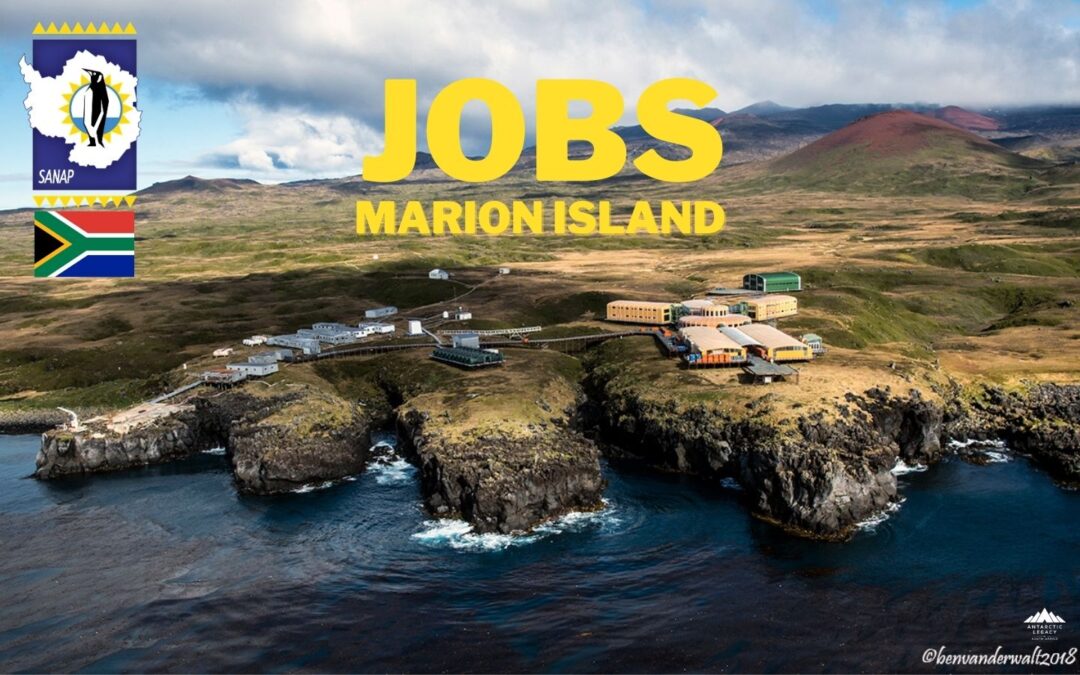
by Ria Olivier | Dec 23, 2024 | Biosecurity, Ecology, Jobs, Marine Protected Area, Marion Island
Vacancy for field researcher on Marion Island
(March 2025 – May 2026)
Mouse impacts on invertebrates and plants
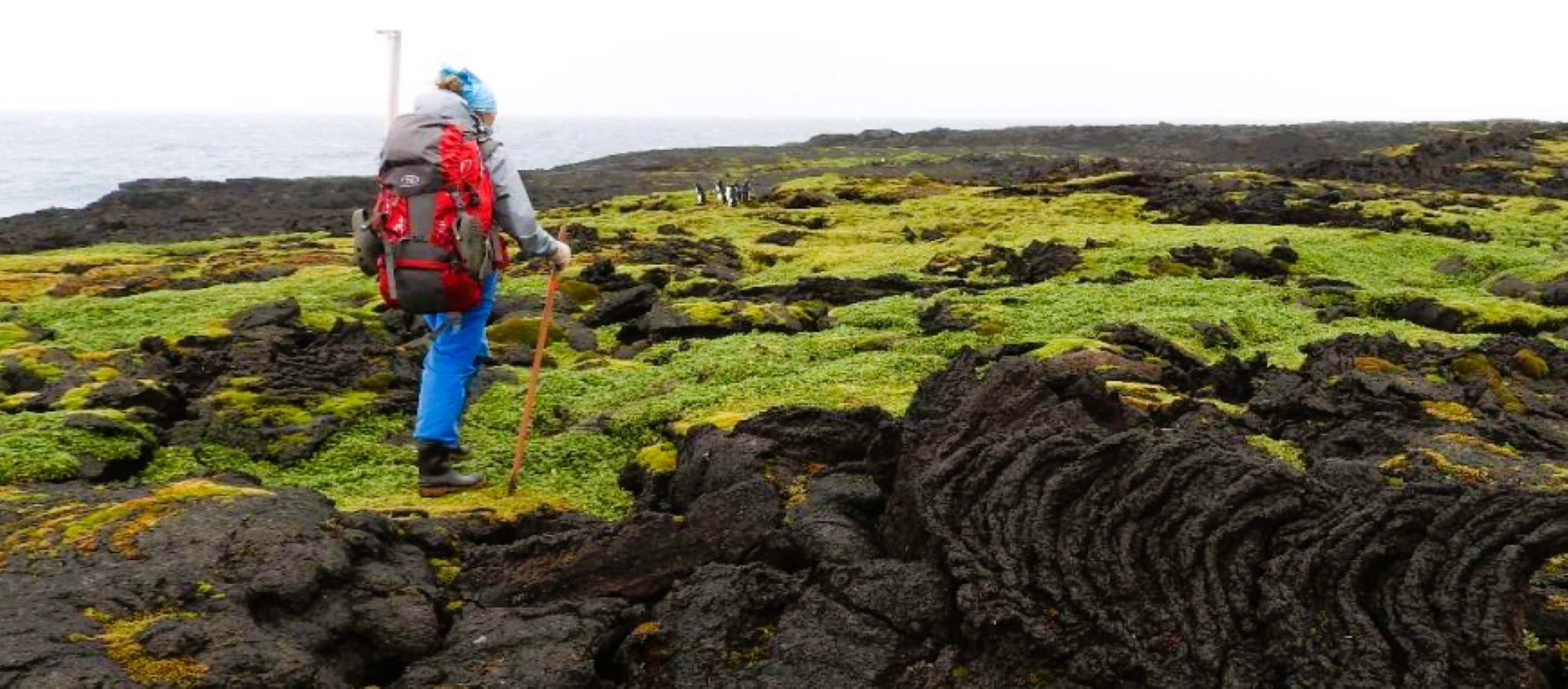 The Department of Plant and Soil Sciences at the University of Pretoria is offering one suitably qualified candidate an opportunity to spend a year on Marion Island to measure various aspects of the impact of the house mouse on the diversity and function of the terrestrial ecosystems of Marion Island. This work will entail collecting baseline data, mostly on invertebrates and plants. (Photo Credit: Michelle Greve)
The Department of Plant and Soil Sciences at the University of Pretoria is offering one suitably qualified candidate an opportunity to spend a year on Marion Island to measure various aspects of the impact of the house mouse on the diversity and function of the terrestrial ecosystems of Marion Island. This work will entail collecting baseline data, mostly on invertebrates and plants. (Photo Credit: Michelle Greve)
Collecting invertebrate community data and identifying invertebrates.
Surveying and monitoring vegetation plots. Measuring plant traits.
Mapping species and events.
Installing, maintaining and downloading data from loggers.
Note that duties may change during the course of the year.
FULL DETAILS
Deadline for applications: 10 January 2025
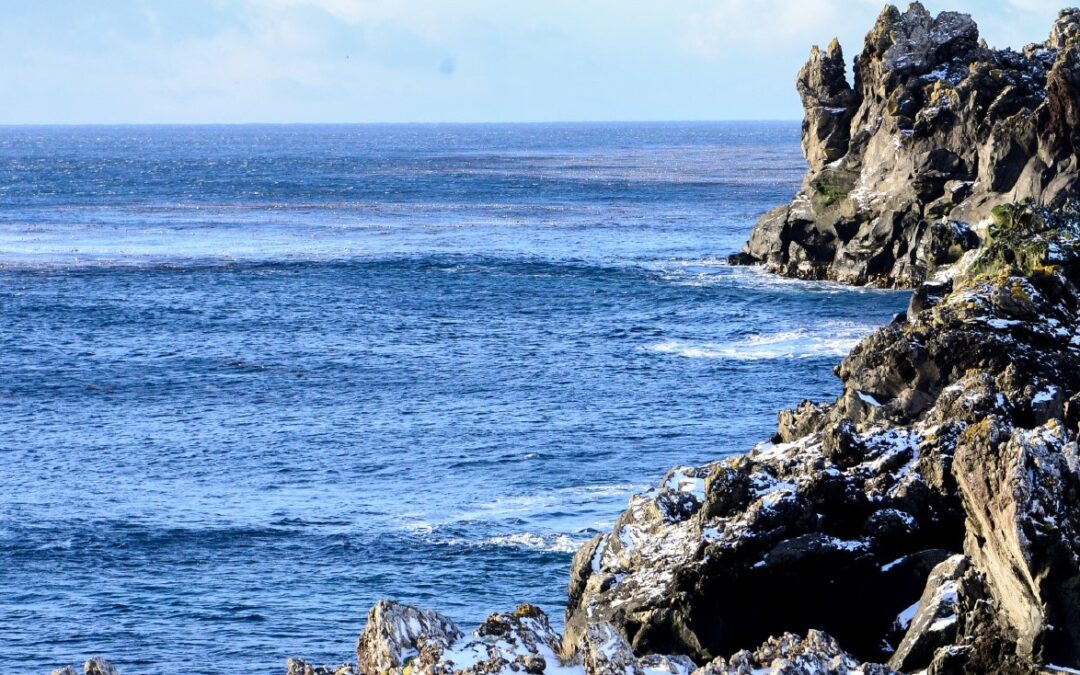
by Ria Olivier | Jul 31, 2024 | International Days, Marine Protected Area
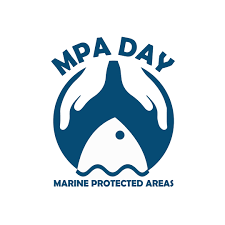
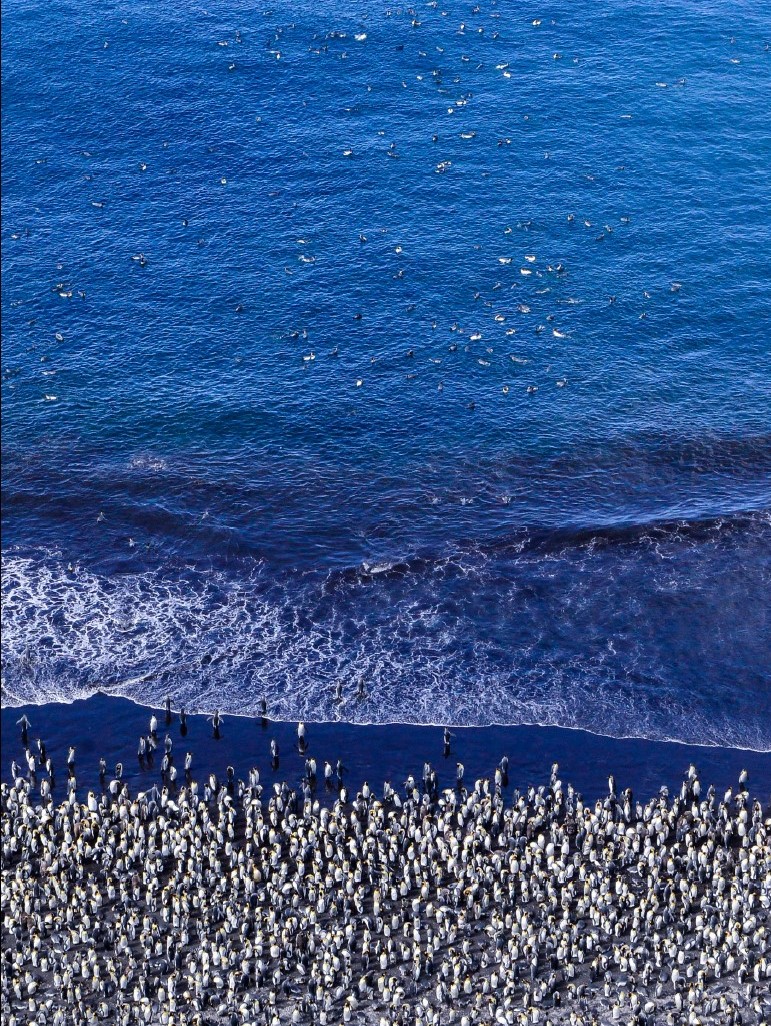 Each August 1st, we recognize the invaluable contribution of marine protected areas to ocean health and biodiversity. These underwater sanctuaries are vital for safeguarding our planet’s precious marine life and ecosystems. Here at the South African National Antarctic Programme (SANAP), we understand the critical role Marin Protected Areas (MPA) play in preserving the pristine waters of the Southern Ocean.
Each August 1st, we recognize the invaluable contribution of marine protected areas to ocean health and biodiversity. These underwater sanctuaries are vital for safeguarding our planet’s precious marine life and ecosystems. Here at the South African National Antarctic Programme (SANAP), we understand the critical role Marin Protected Areas (MPA) play in preserving the pristine waters of the Southern Ocean.
Everything you need to know about South African MPA’s
Why are MPAs Crucial for Antarctica?
The Southern Ocean is a global treasure trove of biodiversity. From majestic whales and playful penguins to countless microscopic organisms, this unique ecosystem is essential for the health of our planet. MPAs act as life-saving havens for marine life, allowing populations to recover and thrive. By shielding these delicate environments from human pressures like overfishing and pollution, we’re investing in the future of our oceans and the countless species that depend on them.
 SANAP’s Commitment to Conservation
SANAP’s Commitment to Conservation
As custodians of South Africa’s sub-Antarctic territory, SANAP is deeply committed to protecting the Southern Ocean. Our scientists diligently monitor these protected areas, gathering invaluable data to inform conservation strategies. The Prince Edward Islands Marine Protected Area, a cornerstone of our efforts, is a sub-Antarctic gem teeming with life. This MPA not only safeguards iconic species like penguins and albatrosses but also plays a crucial role in rebuilding depleted fish stocks.
 Your Role in Ocean Conservation
Your Role in Ocean Conservation
Everyone has a part to play in protecting our oceans. By reducing plastic consumption, supporting sustainable seafood choices, and spreading awareness about the importance of MPAs, you contribute to a healthier planet. Let’s work together to ensure that future generations can continue to marvel at the wonders of the marine world.
 Relevant Documents:
Relevant Documents:
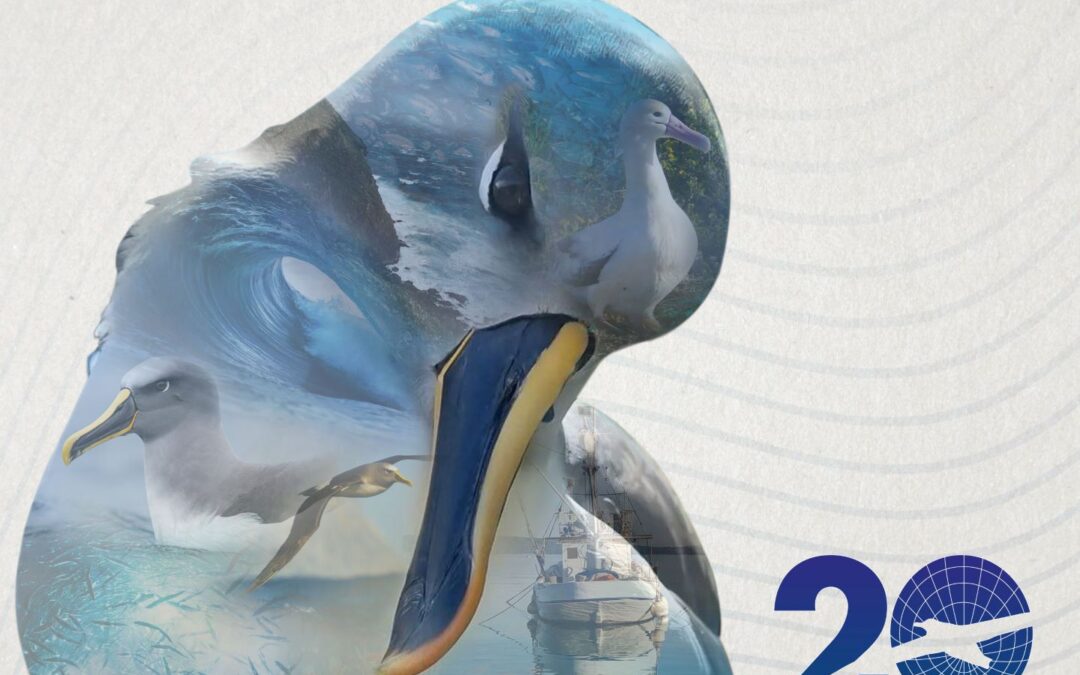
by Ria Olivier | Jun 19, 2024 | International Days, Invasion Biology, Marine Protected Area, Marion Island, Prince Edward Islands
Dance of the Albatross
The dance of the Albatross. Video made by Anche Louw on 16 April 2016 on Marion Island at Swartkops.
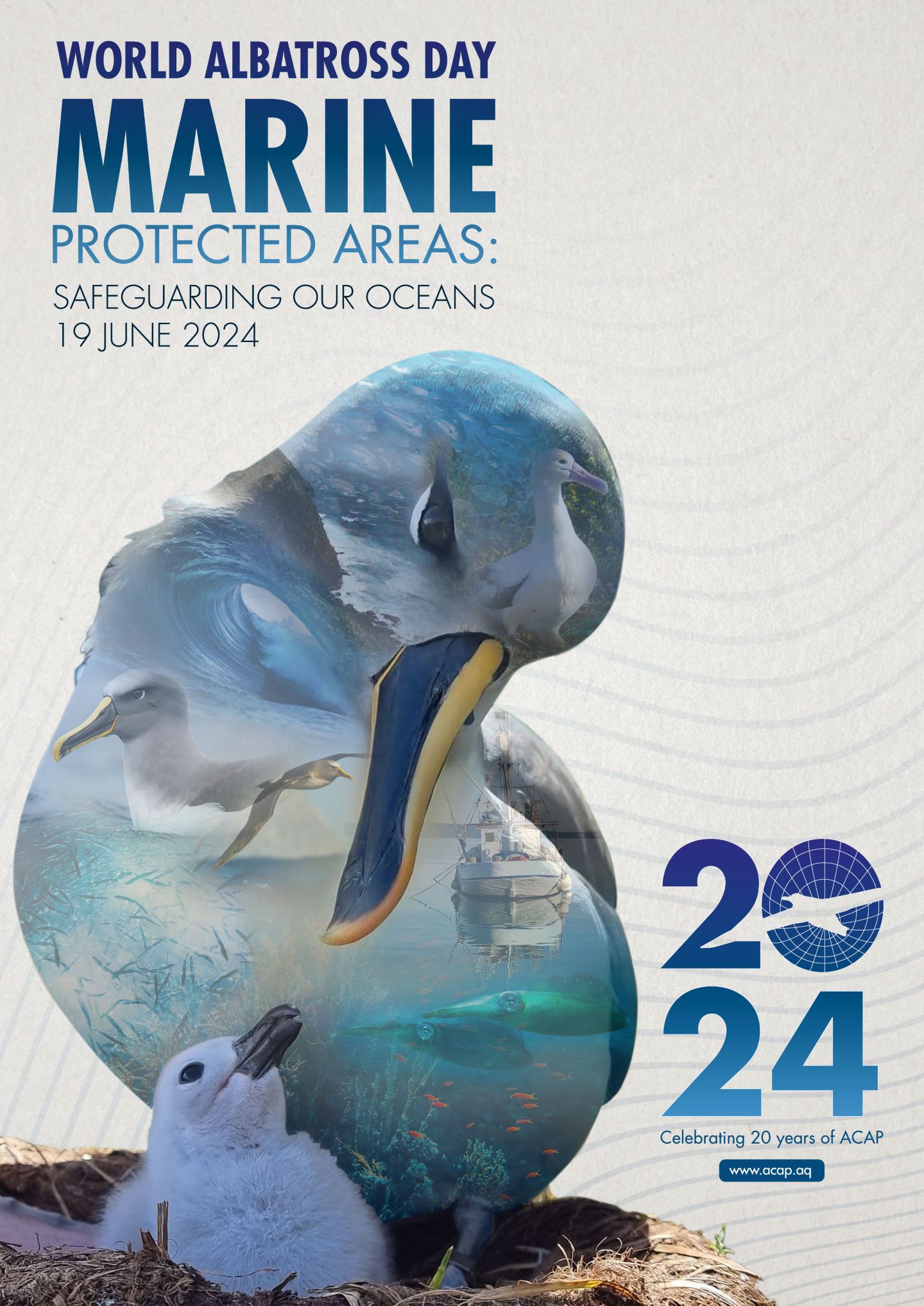 The Agreement on the Conservation of Albatrosses and Petrels (ACAP) has announced that “Marine Protected Areas – Safeguarding our Oceans” is to be its theme for this year’s World Albatross Day (WAD2024) on 19 June. “Albatrosses are the ultimate ocean wanderers, spending most of their lives at sea traversing vast distances across the globe in search of food such as fish, squid and krill. This year, World Albatross Day will focus on the connection between albatrosses and the ocean and highlight how MPAs can help improve the conservation status of these magnificent birds.” – ACAP
The Agreement on the Conservation of Albatrosses and Petrels (ACAP) has announced that “Marine Protected Areas – Safeguarding our Oceans” is to be its theme for this year’s World Albatross Day (WAD2024) on 19 June. “Albatrosses are the ultimate ocean wanderers, spending most of their lives at sea traversing vast distances across the globe in search of food such as fish, squid and krill. This year, World Albatross Day will focus on the connection between albatrosses and the ocean and highlight how MPAs can help improve the conservation status of these magnificent birds.” – ACAP
Help Saving Marion Island’s Seabirds. Donate now.
The WAD2024 poster was created by South African born Graphic Designer and long-time ACAP collaborator, Geoff Tyler, who also designed ACAP’s World Albatross Day logo, including this year’s commemorative logo marking the Agreement’s 20th year since coming into force.
Feature photo form video clip made by Anche Louw (22 April 2016)
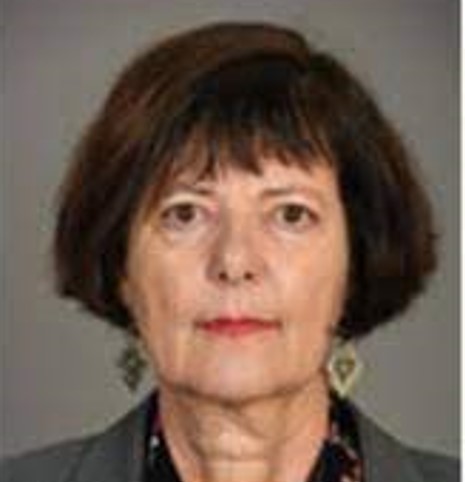
by Ria Olivier | Mar 11, 2024 | Announcement, Environment, Invasion Biology, Marine Protected Area, Marion Island, Mice Eradication, Prince Edward Island, Prince Edward Islands
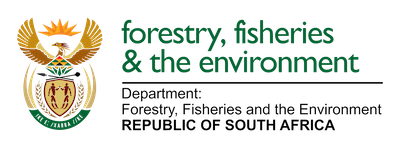 MINISTER CREECY LAUNCHES THE 3RD NATIONAL STATUS OF BIOLOGICAL INVASIONS AND THEIR MANAGEMENT IN SOUTH AFRICA
MINISTER CREECY LAUNCHES THE 3RD NATIONAL STATUS OF BIOLOGICAL INVASIONS AND THEIR MANAGEMENT IN SOUTH AFRICA
Full release available on Department of Forestry Fisheries nd the Environment website
 “We must continue investing in research and innovation, supporting studies that enhance our understanding of invasive species dynamics to improve management strategies. The 3rd National Status report on Biological Invasions serves as a clarion call for action reminding us of the urgency of the situation and the imperative to act decisively,”
“We must continue investing in research and innovation, supporting studies that enhance our understanding of invasive species dynamics to improve management strategies. The 3rd National Status report on Biological Invasions serves as a clarion call for action reminding us of the urgency of the situation and the imperative to act decisively,”
“Addressing the challenges posed by biological invasions requires a coordinated and collaborative effort. No single entity can tackle this issue alone. Government, academics, civil society organisations and communities must come together, pooling their knowledge, resources and expertise to develop effective prevention, early detection and control strategies,” said Minister Creecy.
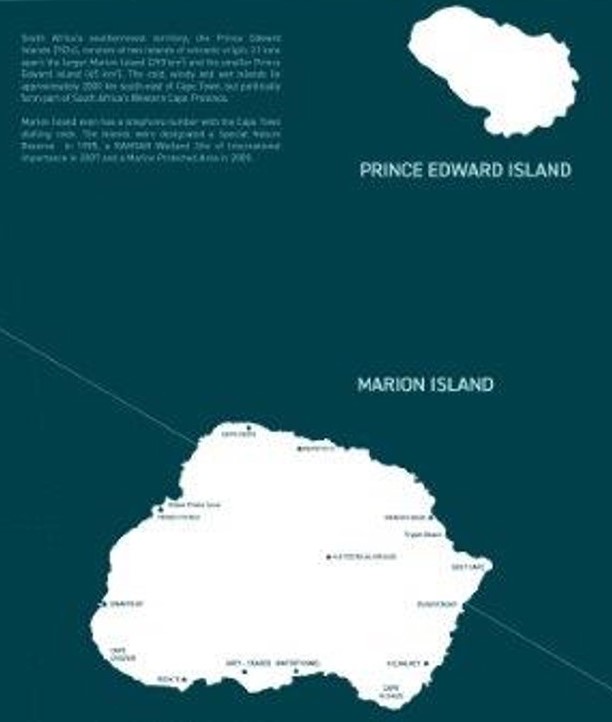 Thirdly, invasive species are devastating the unique and sensitive biodiversity of the Prince Edward Islands. For the first time, this report provides a separate assessment of the status of biological invasions and their management on the Prince Edward Islands. Although these islands are part of South Africa, their remote location and unique biodiversity warrant a separate assessment. Findings highlight the devastating impact of the house mouse, which is alien to the Marion Island. The mice feed on plants, and small animals including endangered seabirds. A bold plan to eradicate mice from the island has been developed and is due to be implemented in 2027. The eradication of mice from Marion Island is essential if its unique biodiversity is to be preserved.
Thirdly, invasive species are devastating the unique and sensitive biodiversity of the Prince Edward Islands. For the first time, this report provides a separate assessment of the status of biological invasions and their management on the Prince Edward Islands. Although these islands are part of South Africa, their remote location and unique biodiversity warrant a separate assessment. Findings highlight the devastating impact of the house mouse, which is alien to the Marion Island. The mice feed on plants, and small animals including endangered seabirds. A bold plan to eradicate mice from the island has been developed and is due to be implemented in 2027. The eradication of mice from Marion Island is essential if its unique biodiversity is to be preserved.

by Ria Olivier | Feb 26, 2024 | Antarctica, Biosecurity, Engineering, Mammology, Marine Protected Area, Marion Island, Research, SANAP

 Dr Mia Wege chaired the session on Marine Mammals during the 6th SANAP Symposium that resorts within the Marine and Antarctic Research Strategy – ecosystems, biodiversity and biodiscovery. The session includes talks on various marine and the presentations were arranged according roughly to species and area. This Included elephant seals, fur seal, Ross seal, whales in ice, whales along the Southern African coast The session was presented in panel, discussion format, that allowed for questions form the audience. (Photo Credit: ALSA Archive)
Dr Mia Wege chaired the session on Marine Mammals during the 6th SANAP Symposium that resorts within the Marine and Antarctic Research Strategy – ecosystems, biodiversity and biodiscovery. The session includes talks on various marine and the presentations were arranged according roughly to species and area. This Included elephant seals, fur seal, Ross seal, whales in ice, whales along the Southern African coast The session was presented in panel, discussion format, that allowed for questions form the audience. (Photo Credit: ALSA Archive)
- Dr Christian Murray: Understanding the drivers of Marion Island’s elephant seal population. (Abstract)
- Leandri de Kock: Considering individual variation when investigating marine predator behaviours during life- history events(Abstract)
- Dr Liezl Pretorius and Dr Greg Hofmeyr (presenting): Canine morphometrics as a tool for distinguishing species, sex and age in Southern Ocean fur seals(Abstract)
- Dr Mia Wege: The conveyor belt of Ross seals in the Lazarev Sea and their behaviour. (Abstract)
- Matthew Germishuizen: Sea ice declines coincide with a period of reduced reproductive success in Southern Ocean top predator (Abstract)
- Oluwaseyi Paul Babalola: Entropy-based Detection and Classification of Bryde’s Whale Vocalizations: An Approach for Understanding and Conserving an Endangered Species(Abstract)
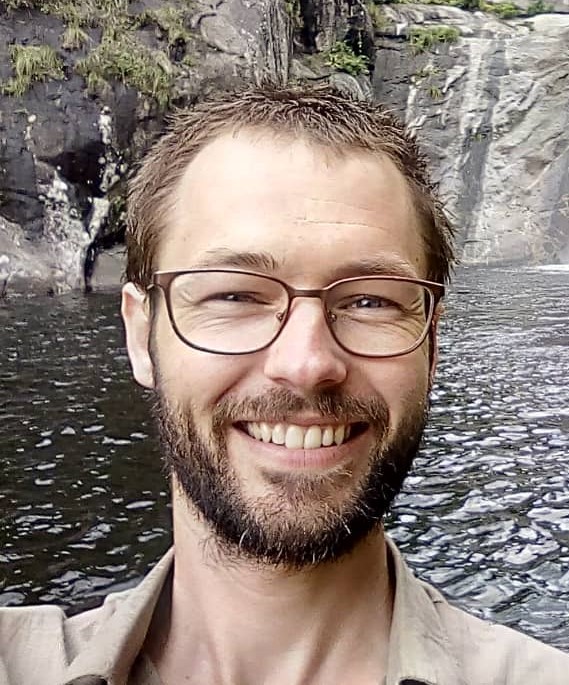
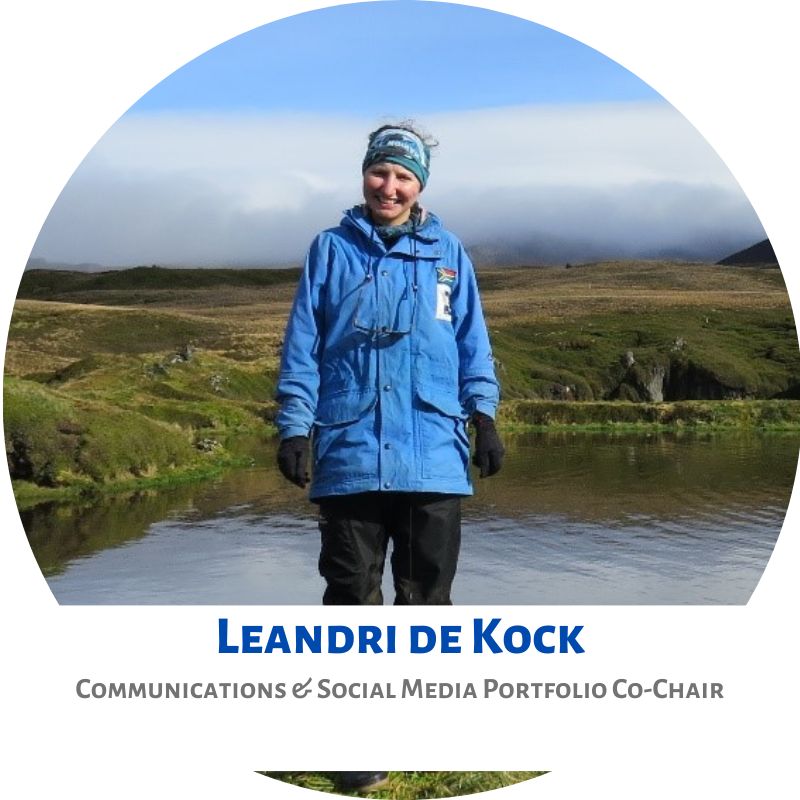
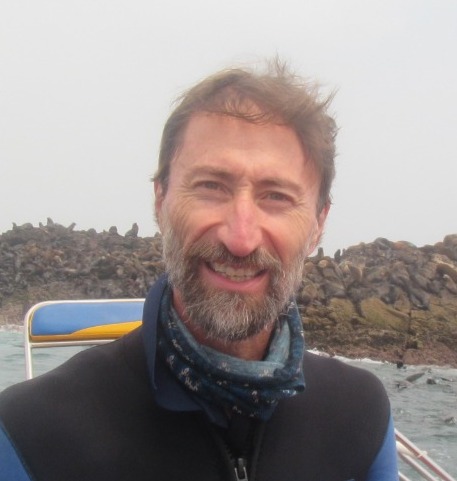
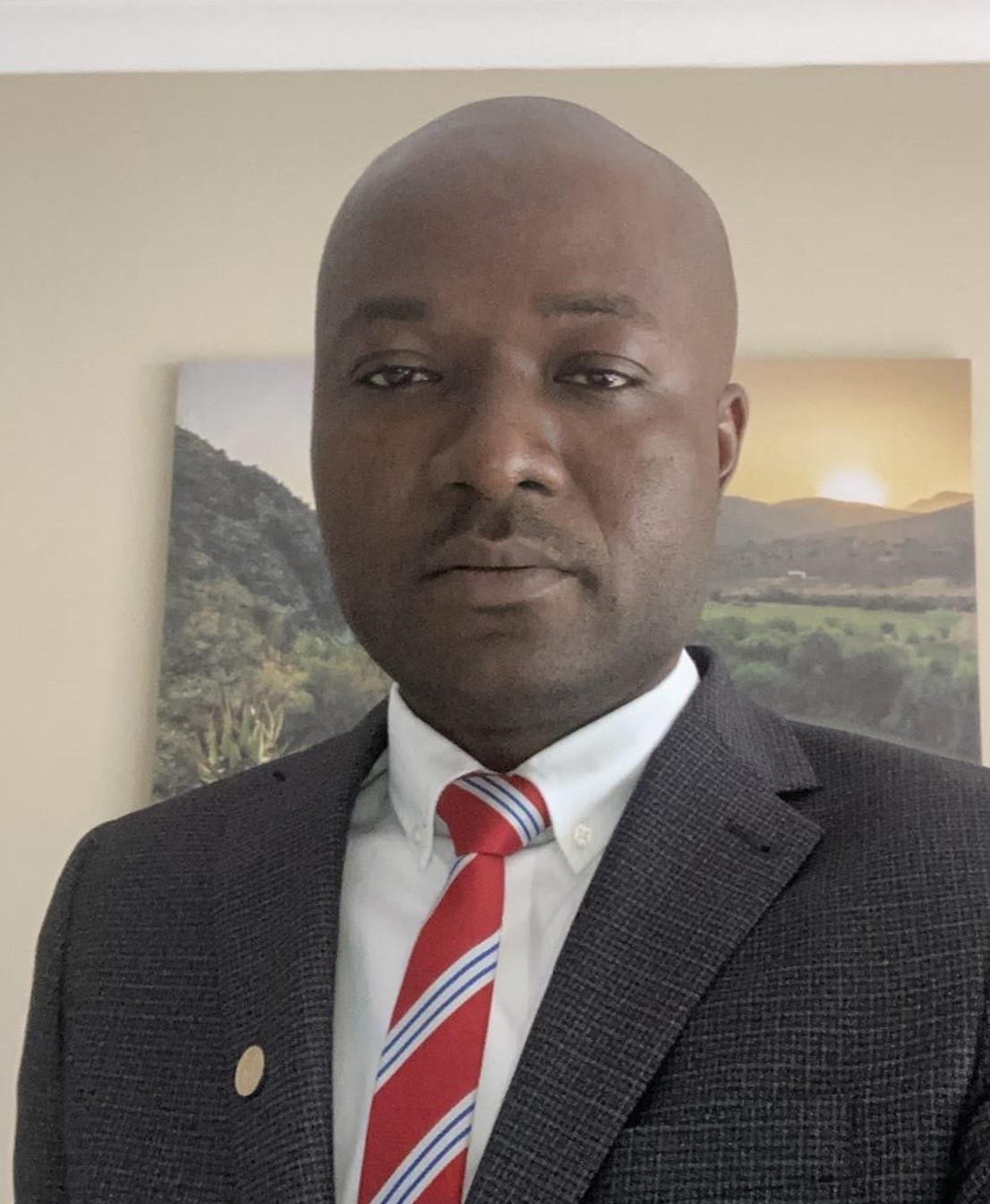
(Above L-R: Dr Christian Murray, Leandri de Kock, Dr Greg Hofmeyr, Oluwaseyi Paul Babalola)
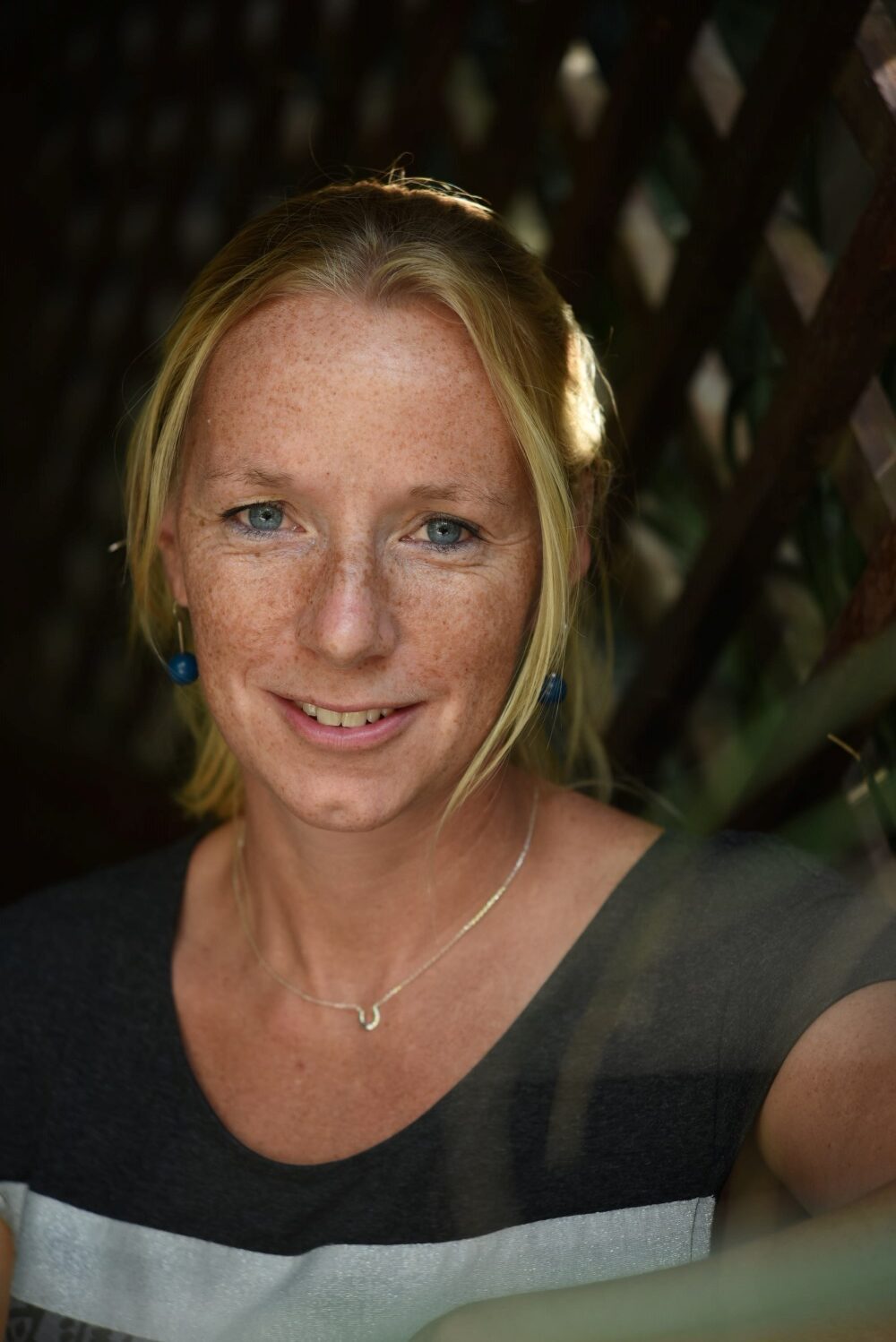
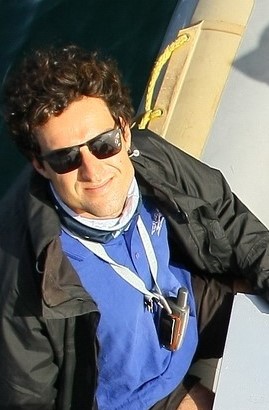
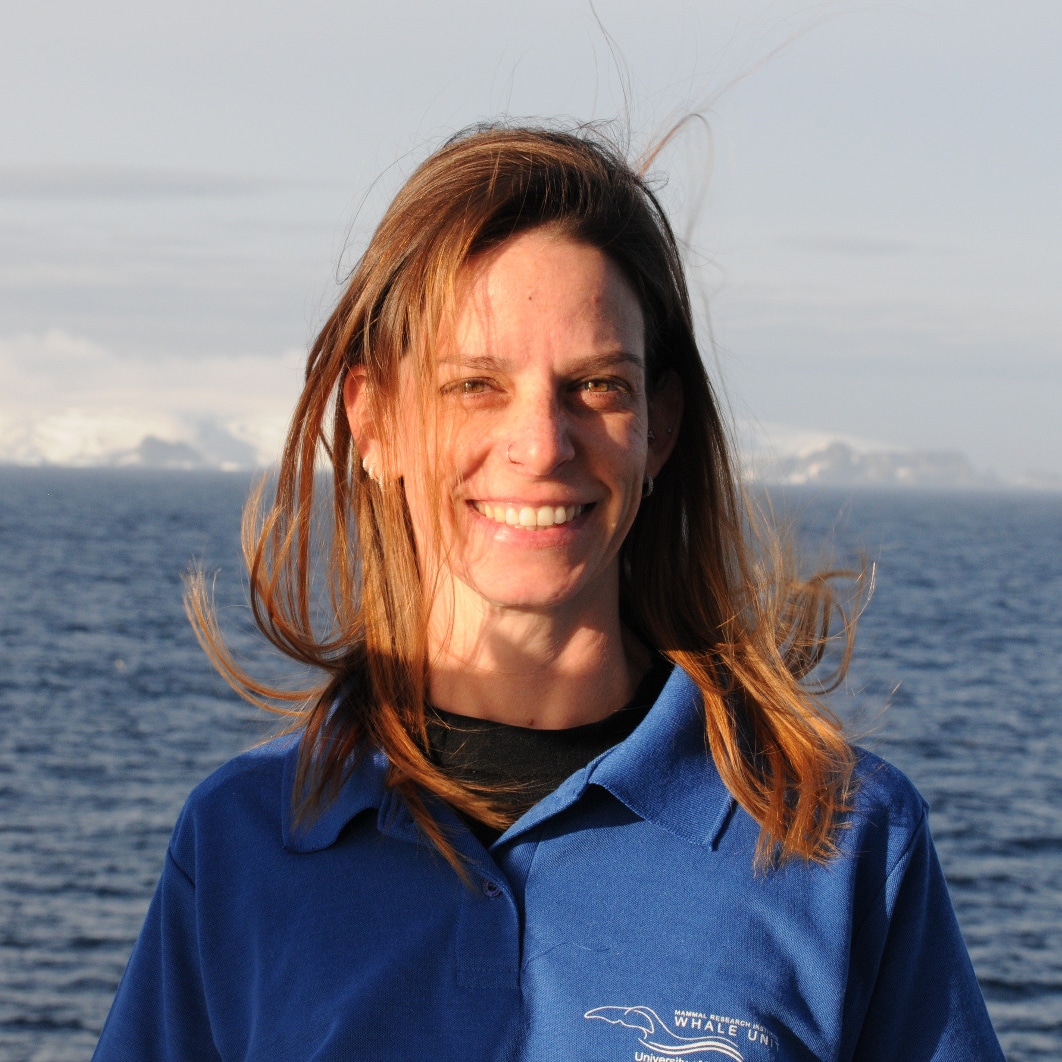
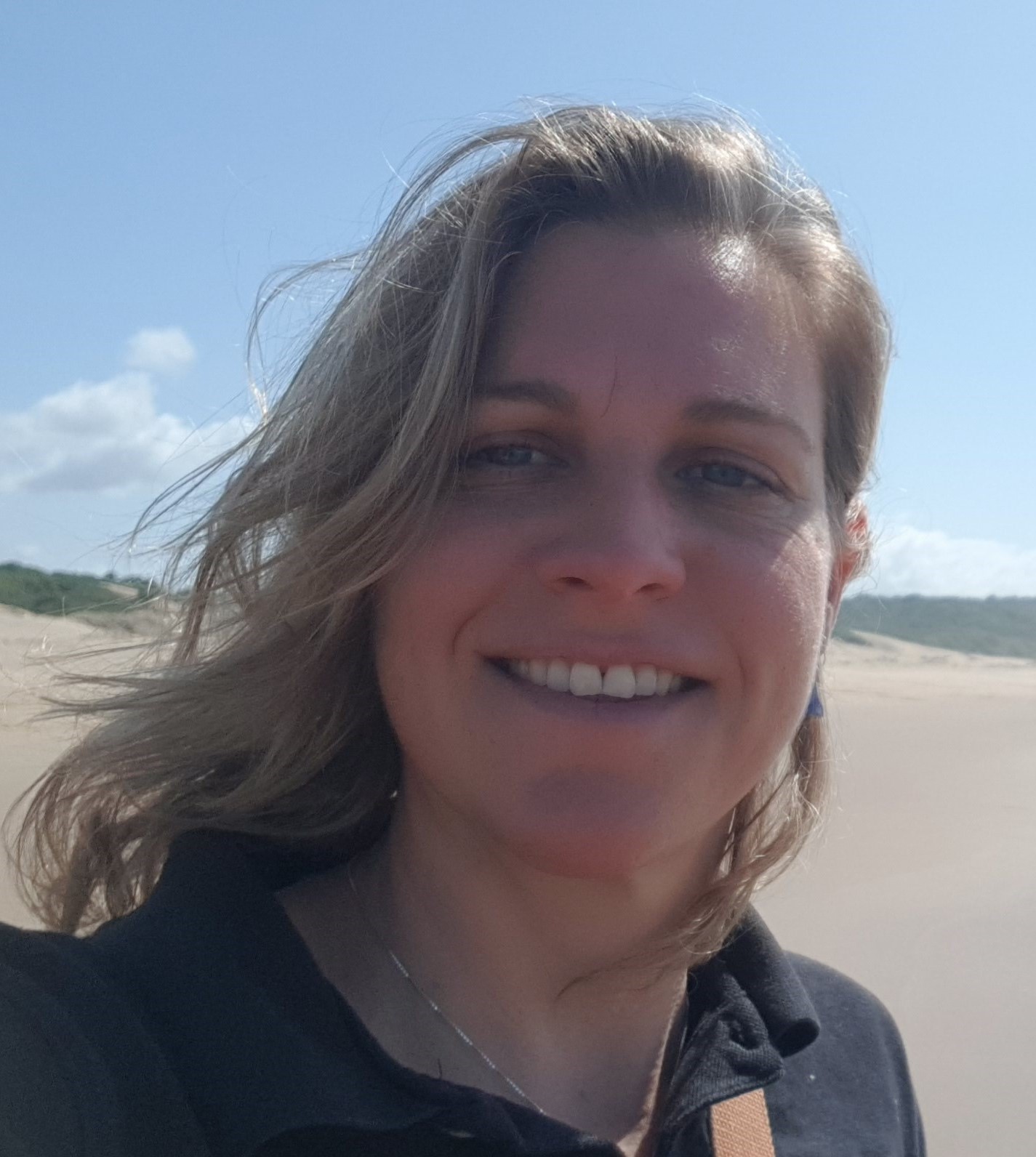
It was great to see the Mammal Research Institute Whale Unit of the University of Pretoria based in Hermanus, Western Cape represented during the symposium by Dr Els Vermeulen, Matthew Germishuizen, Elisa Seyboth and Antonia Immerz. (Above L-R)
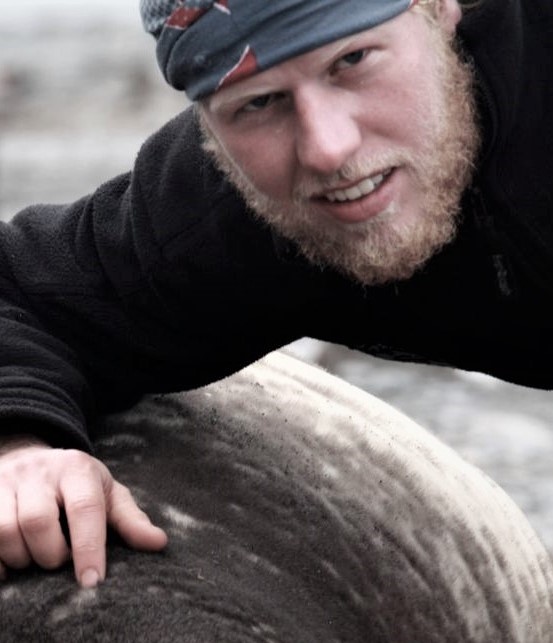

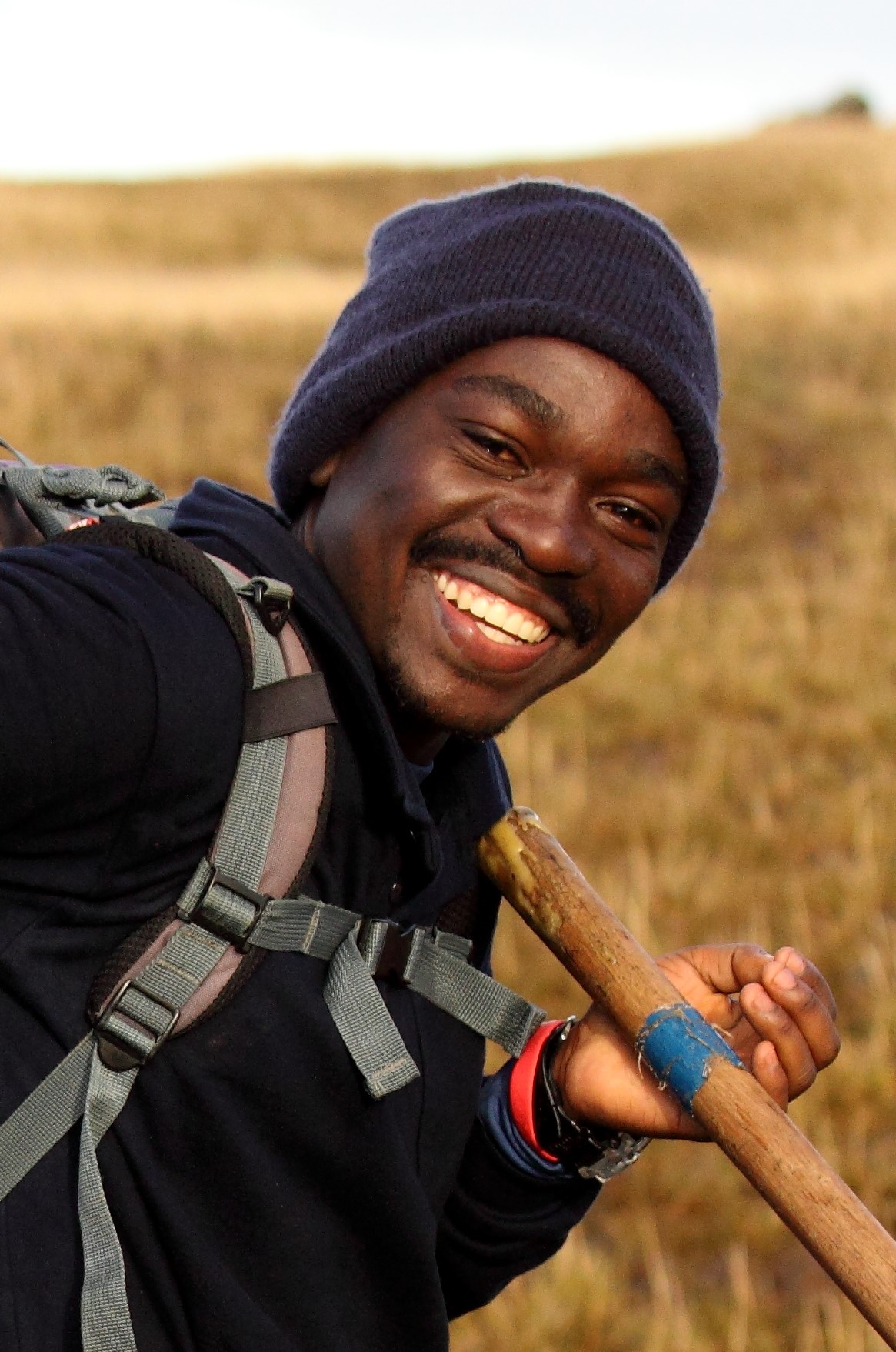
The Prince Edward Island scientific expedition was able to join the symposium on the 30th November and Chris Oosthuizen did his presentation in the session, ‘Data Management and the Summer Survey Participants’ chaired by Dr Christel Hansen. Liezel Pretorius was also able to join the conference on the Thursday. (Above L-R: Chris Oosthuizen, Liezel Pretorius, Yinhla Shihlomuhle)
- Dr Chris Oosthuizen. Marine predators: ecosystem sentinels that help inform Southern Ocean management. (Abstract)
An initiative by Mia Wege was to use the SANAP symposium to bring all “bio loggers/trackers” together, that included researchers who tag animals, mostly top predators across the globe. The purpose was to get some structure going and talk about a potential larger workshop specifically for the entire community. The meeting was well represented, and this was a great opportunity used.
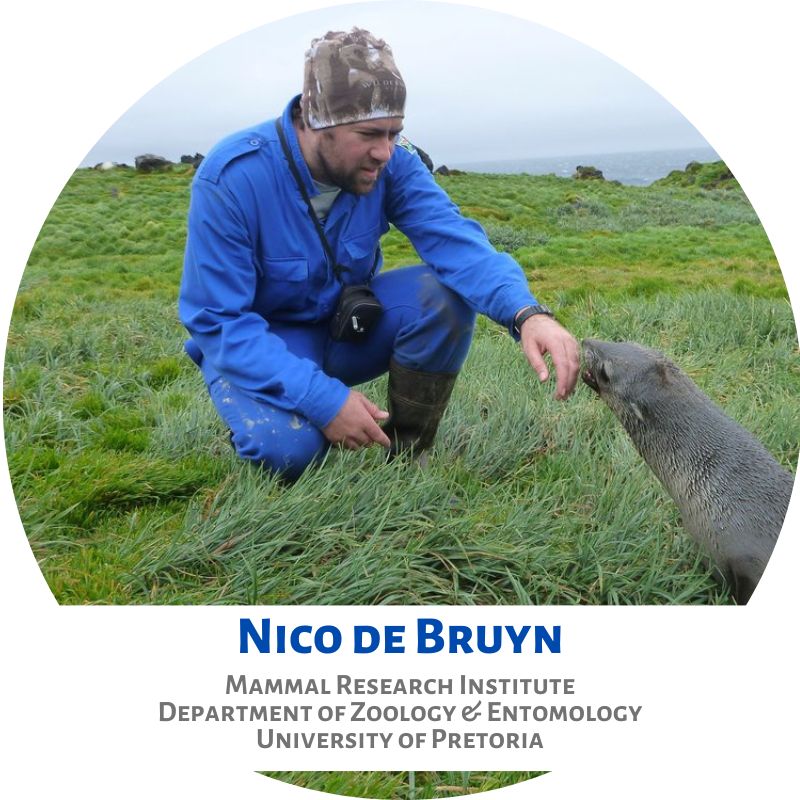
 Two of the Principal investigators of the project were able to attend the symposium. ( Nico de Bruyn(left) – University of Pretoria and Jaco Versfeld (Right) Stellenbosch University)
Two of the Principal investigators of the project were able to attend the symposium. ( Nico de Bruyn(left) – University of Pretoria and Jaco Versfeld (Right) Stellenbosch University)
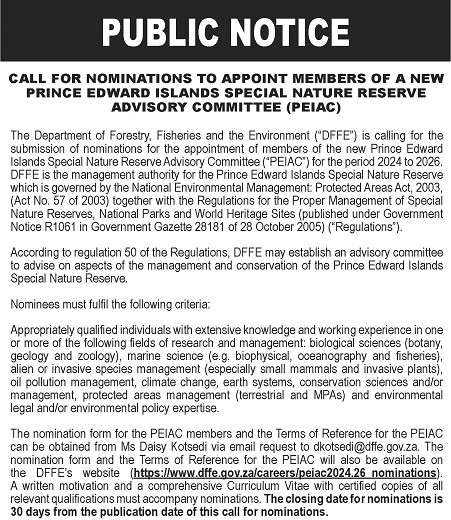
by Ria Olivier | Feb 14, 2024 | Announcement, Marine Protected Area, Marion Island, Prince Edward Island, Prince Edward Islands
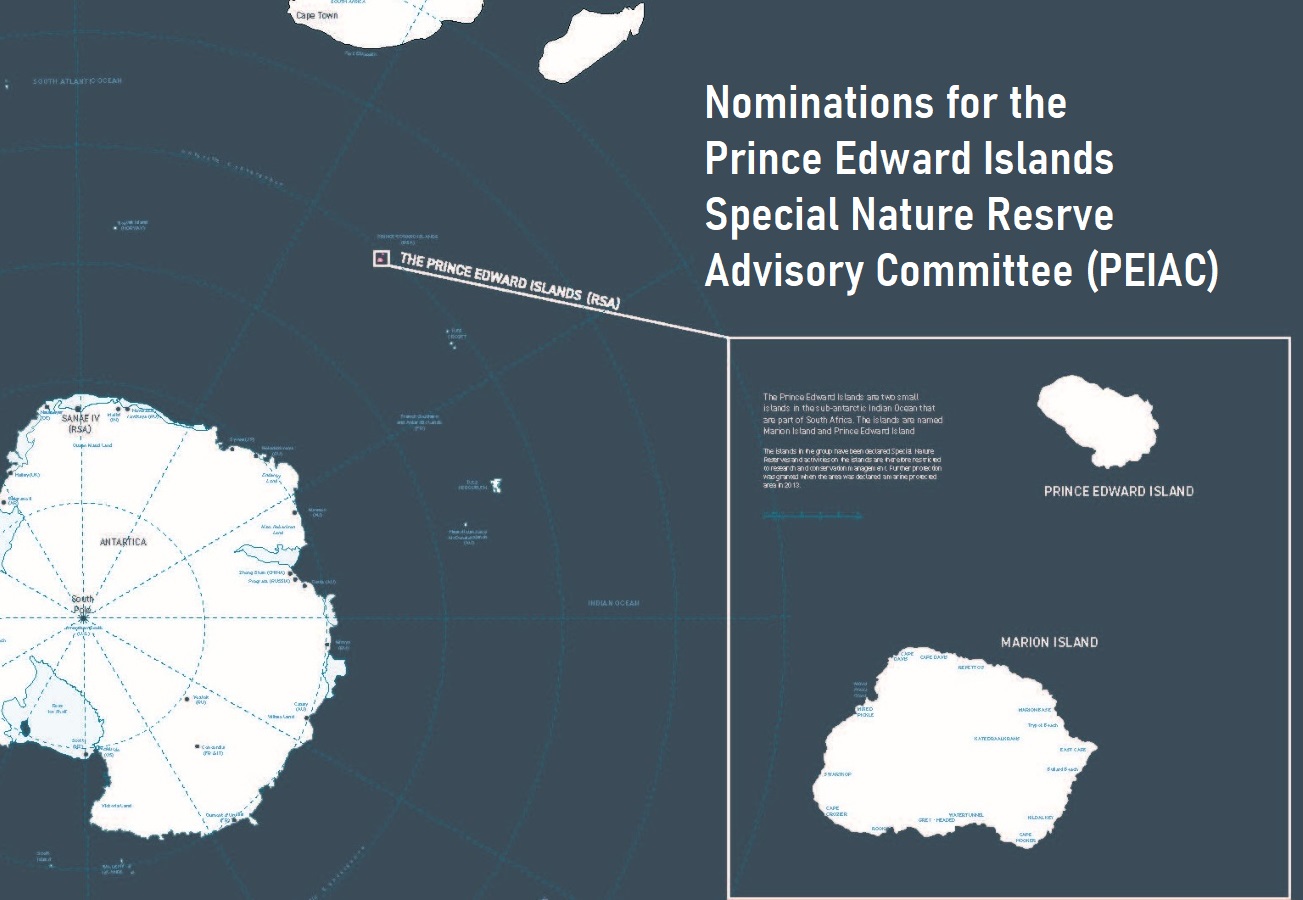 The Department of Forestry, Fisheries and the Environment is calling for the submission of nominations for the appointment of members to serve on the Prince Edward Islands Special Nature Reserve Advisory Committee (“PEIAC”) for the period 2024 to 2026.
The Department of Forestry, Fisheries and the Environment is calling for the submission of nominations for the appointment of members to serve on the Prince Edward Islands Special Nature Reserve Advisory Committee (“PEIAC”) for the period 2024 to 2026.
 See the full criteria here and Public Notice
See the full criteria here and Public Notice
Enquiries may be directed to:
Ms Daisy Kotsedi
Tel: 021 493 7354
E-mail: dkotsedi@dffe.gov.za
CLOSING DATE: 19 March 2024

 The Department of Plant and Soil Sciences at the University of Pretoria is offering one suitably qualified candidate an opportunity to spend a year on Marion Island to measure various aspects of the impact of the house mouse on the diversity and function of the terrestrial ecosystems of Marion Island. This work will entail collecting baseline data, mostly on invertebrates and plants. (Photo Credit: Michelle Greve)
The Department of Plant and Soil Sciences at the University of Pretoria is offering one suitably qualified candidate an opportunity to spend a year on Marion Island to measure various aspects of the impact of the house mouse on the diversity and function of the terrestrial ecosystems of Marion Island. This work will entail collecting baseline data, mostly on invertebrates and plants. (Photo Credit: Michelle Greve)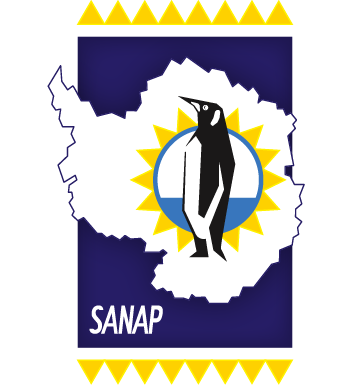


 Each August 1st, we recognize the invaluable contribution of marine protected areas to ocean health and biodiversity. These underwater sanctuaries are vital for safeguarding our planet’s precious marine life and ecosystems. Here at the South African National Antarctic Programme (SANAP), we understand the critical role Marin Protected Areas (MPA) play in preserving the pristine waters of the Southern Ocean.
Each August 1st, we recognize the invaluable contribution of marine protected areas to ocean health and biodiversity. These underwater sanctuaries are vital for safeguarding our planet’s precious marine life and ecosystems. Here at the South African National Antarctic Programme (SANAP), we understand the critical role Marin Protected Areas (MPA) play in preserving the pristine waters of the Southern Ocean. SANAP’s Commitment to Conservation
SANAP’s Commitment to Conservation Your Role in Ocean Conservation
Your Role in Ocean Conservation Relevant Documents:
Relevant Documents:
 The Agreement on the Conservation of Albatrosses and Petrels (ACAP) has announced that “Marine Protected Areas – Safeguarding our Oceans” is to be its theme for this year’s
The Agreement on the Conservation of Albatrosses and Petrels (ACAP) has announced that “Marine Protected Areas – Safeguarding our Oceans” is to be its theme for this year’s 
 MINISTER CREECY LAUNCHES THE 3RD NATIONAL STATUS OF BIOLOGICAL INVASIONS AND THEIR MANAGEMENT IN SOUTH AFRICA
MINISTER CREECY LAUNCHES THE 3RD NATIONAL STATUS OF BIOLOGICAL INVASIONS AND THEIR MANAGEMENT IN SOUTH AFRICA Thirdly, invasive species are devastating the unique and sensitive biodiversity of the Prince Edward Islands. For the first time, this report provides a separate assessment of the status of biological invasions and their management on the Prince Edward Islands. Although these islands are part of South Africa, their remote location and unique biodiversity warrant a separate assessment. Findings highlight the devastating impact of the house mouse, which is alien to the Marion Island. The mice feed on plants, and small animals including endangered seabirds. A bold plan to eradicate mice from the island has been developed and is due to be implemented in 2027. The eradication of mice from Marion Island is essential if its unique biodiversity is to be preserved.
Thirdly, invasive species are devastating the unique and sensitive biodiversity of the Prince Edward Islands. For the first time, this report provides a separate assessment of the status of biological invasions and their management on the Prince Edward Islands. Although these islands are part of South Africa, their remote location and unique biodiversity warrant a separate assessment. Findings highlight the devastating impact of the house mouse, which is alien to the Marion Island. The mice feed on plants, and small animals including endangered seabirds. A bold plan to eradicate mice from the island has been developed and is due to be implemented in 2027. The eradication of mice from Marion Island is essential if its unique biodiversity is to be preserved.

 Dr Mia Wege chaired the session on Marine Mammals during the 6th SANAP Symposium that resorts within the Marine and Antarctic Research Strategy – ecosystems, biodiversity and biodiscovery. The session includes talks on various marine and the presentations were arranged according roughly to species and area. This Included elephant seals, fur seal, Ross seal, whales in ice, whales along the Southern African coast The session was presented in panel, discussion format, that allowed for questions form the audience. (Photo Credit: ALSA Archive)
Dr Mia Wege chaired the session on Marine Mammals during the 6th SANAP Symposium that resorts within the Marine and Antarctic Research Strategy – ecosystems, biodiversity and biodiscovery. The session includes talks on various marine and the presentations were arranged according roughly to species and area. This Included elephant seals, fur seal, Ross seal, whales in ice, whales along the Southern African coast The session was presented in panel, discussion format, that allowed for questions form the audience. (Photo Credit: ALSA Archive)











 Two of the Principal investigators of the project were able to attend the symposium. ( Nico de Bruyn(left) – University of Pretoria and Jaco Versfeld (Right) Stellenbosch University)
Two of the Principal investigators of the project were able to attend the symposium. ( Nico de Bruyn(left) – University of Pretoria and Jaco Versfeld (Right) Stellenbosch University)
 The Department of Forestry, Fisheries and the Environment is calling for the submission of nominations for the appointment of members to serve on the Prince Edward Islands Special Nature Reserve Advisory Committee (“PEIAC”) for the period 2024 to 2026.
The Department of Forestry, Fisheries and the Environment is calling for the submission of nominations for the appointment of members to serve on the Prince Edward Islands Special Nature Reserve Advisory Committee (“PEIAC”) for the period 2024 to 2026.

